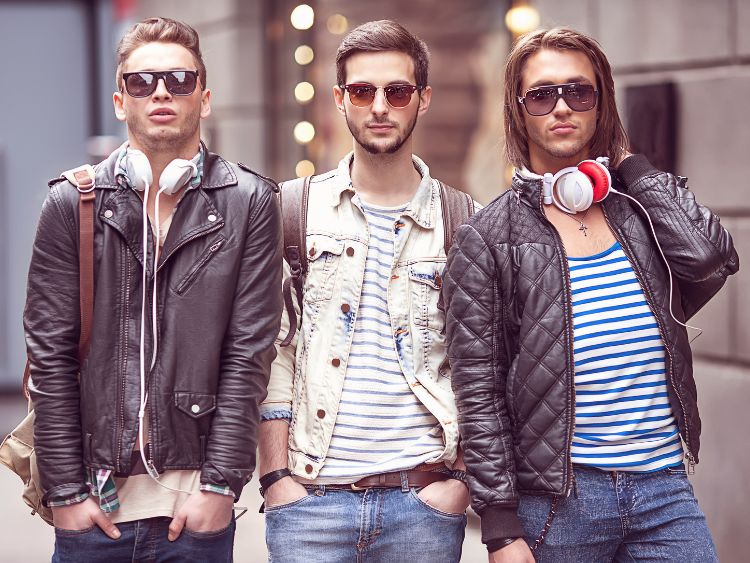Fashion in the 1930s was all about elegance, innovation, and adaptability. As the world recovered from the Great Depression, clothing trends shifted to reflect both economic conditions and the glamour of Hollywood. The decade’s style offered a mix of practicality and sophistication, influencing modern-day fashion in more ways than one.
The Influence of Hollywood Glamour
The rise of Hollywood during the 1930s played a significant role in shaping fashion trends. Movie stars like Jean Harlow, Joan Crawford, and Greta Garbo became fashion icons, their glamorous on-screen looks influencing everyday wardrobes. The silver screen wasn’t just for entertainment—it was a stage for fashion statements that people worldwide sought to emulate.
Evening gowns of this period were often designed with Hollywood in mind. Silky, bias-cut dresses with low backs, dramatic silhouettes, and luxurious fabrics like satin and velvet became a staple for formal occasions. These gowns epitomized glamour and class, often adorned with sequins or beads for extra sparkle.
The Rise of Ready-to-Wear
Before the 1930s, custom-made clothing was the norm for many women. However, the economic constraints of the Great Depression led to the rise of ready-to-wear fashion. This change allowed women to buy stylish and affordable clothing straight off the rack. As a result, everyday attire became more accessible and practical, while still maintaining an air of elegance.
The popularization of ready-to-wear clothing also brought a shift in how women approached fashion. With clothing now mass-produced, trends spread more quickly, allowing women to stay current without spending a fortune.
Key Fashion Trends of the 1930s
- Bias-Cut Dresses
Introduced by French designer Madeleine Vionnet, the bias cut revolutionized women’s fashion in the 1930s. Dresses cut on the bias (diagonally across the fabric) hugged the body’s natural curves, creating a sleek and feminine silhouette. These dresses were often worn for evening events and quickly became synonymous with 1930s fashion. - Puffed Sleeves and Shoulder Pads
Puffed sleeves became popular during this decade, creating a more pronounced shoulder line. By the late 1930s, shoulder pads were introduced, adding structure and form to blouses, dresses, and coats. This dramatic emphasis on the shoulders balanced the narrow waistlines, enhancing the hourglass figure that was so desirable at the time. - High-Waisted Trousers for Women
While dresses and skirts were the norm, women in the 1930s also began wearing trousers. High-waisted, wide-leg pants became a fashionable alternative to skirts, offering both style and practicality. This trend, initially reserved for casual or leisure settings, eventually gained wider acceptance, challenging traditional notions of femininity. - The Return of the Waistline
Unlike the dropped waists of the 1920s, the 1930s saw a return to natural waistlines. Dresses and skirts emphasized the waist, often with belts or sashes, creating a more defined, hourglass shape. This was a stark contrast to the previous decade’s straight, boyish silhouettes. - Practical Daywear
With the economic hardships of the Great Depression, practicality became essential in everyday clothing. Simple, A-line dresses, often made from cotton or wool, were worn for daytime activities. These dresses were functional but still had a feminine touch, often featuring delicate details like lace collars or floral prints.
Accessories that Made a Statement
Fashion in the 1930s wasn’t just about clothing—accessories played a key role in completing a look. Hats, for instance, were a must-have for any fashionable woman. Cloche hats of the 1920s evolved into more structured, wide-brimmed styles, while berets and turbans added a touch of European flair.
Gloves were another essential accessory, especially for formal occasions. Long, elbow-length gloves paired with evening gowns added an extra layer of sophistication, while shorter gloves were worn for daytime wear.
Jewelry in the 1930s was all about refinement. Instead of the bold, geometric pieces of the Art Deco era, women opted for more delicate and understated jewelry. Pearls, in particular, were a favorite, often worn as single-strand necklaces or in earrings.
Impact of World Events on Fashion
The events of the 1930s, especially the Great Depression, had a significant impact on fashion. Clothing became more practical, with designers focusing on affordability and durability. While luxurious fabrics and intricate designs were still in demand for evening wear, day-to-day fashion took a simpler, more functional approach.
The introduction of synthetic fabrics like rayon also revolutionized fashion during this time. These materials were cheaper than silk and cotton but offered a similar feel, making stylish clothing more accessible to the masses.
FAQs
What defined 1930s fashion?
1930s fashion was defined by a return to elegance and femininity, with an emphasis on natural waistlines, bias-cut dresses, and structured shoulders. The influence of Hollywood and the economic conditions of the Great Depression played key roles in shaping the trends of the decade.
What was the most popular fabric used in the 1930s?
Rayon became increasingly popular in the 1930s due to its affordability and versatility. Satin, silk, and wool were also commonly used, particularly for evening wear.
How did the Great Depression affect fashion in the 1930s?
The Great Depression made fashion more practical and affordable. Ready-to-wear clothing became widespread, and synthetic fabrics like rayon were used to keep costs down while still offering stylish options.
What accessories were popular in the 1930s?
Hats, gloves, and pearls were some of the most popular accessories. Women often completed their outfits with structured hats and elbow-length gloves, especially for formal occasions.
Did women wear trousers in the 1930s?
Yes, women began wearing high-waisted, wide-leg trousers in the 1930s, challenging traditional norms. While dresses remained the standard, trousers became a fashionable and practical option, especially for leisure activities.
Conclusion
1930s fashion was a reflection of the times—elegant yet practical, glamorous yet grounded in reality. From the influence of Hollywood to the rise of ready-to-wear clothing, this decade shaped the future of fashion in ways that are still felt today. The timeless silhouettes, luxurious fabrics, and sophisticated accessories continue to inspire modern designers, proving that the 1930s were truly a golden era of fashion.
Authoritative Links
- www.metmuseum.org/art/collection/search/1930s-fashion
- www.vam.ac.uk/articles/fashion-in-the-1930s
- www.fashionhistory.fitnyc.edu/1930s
